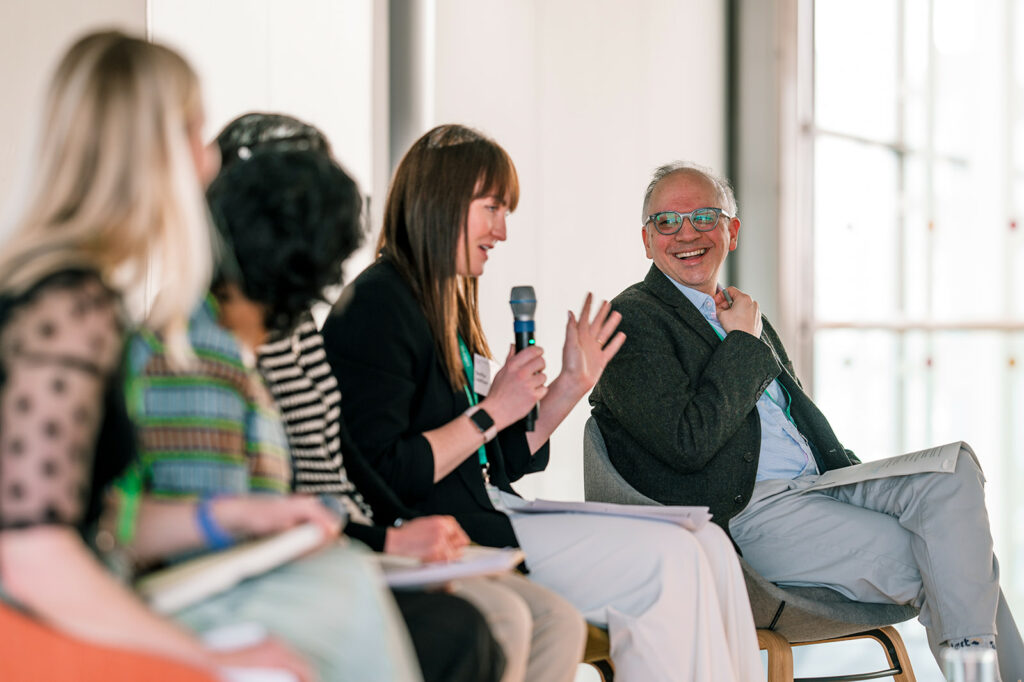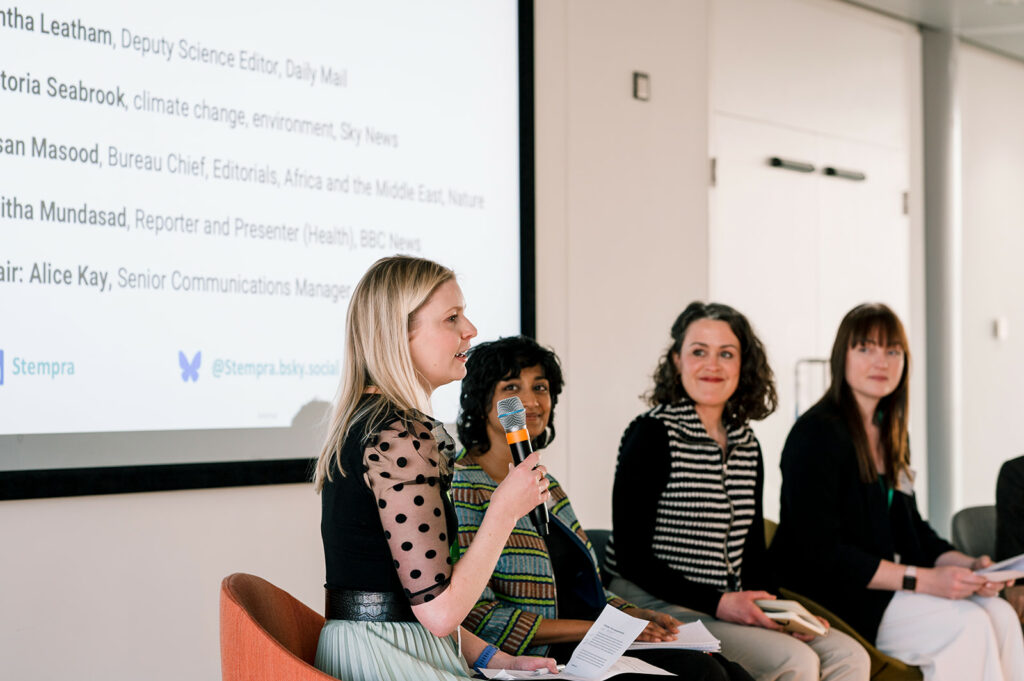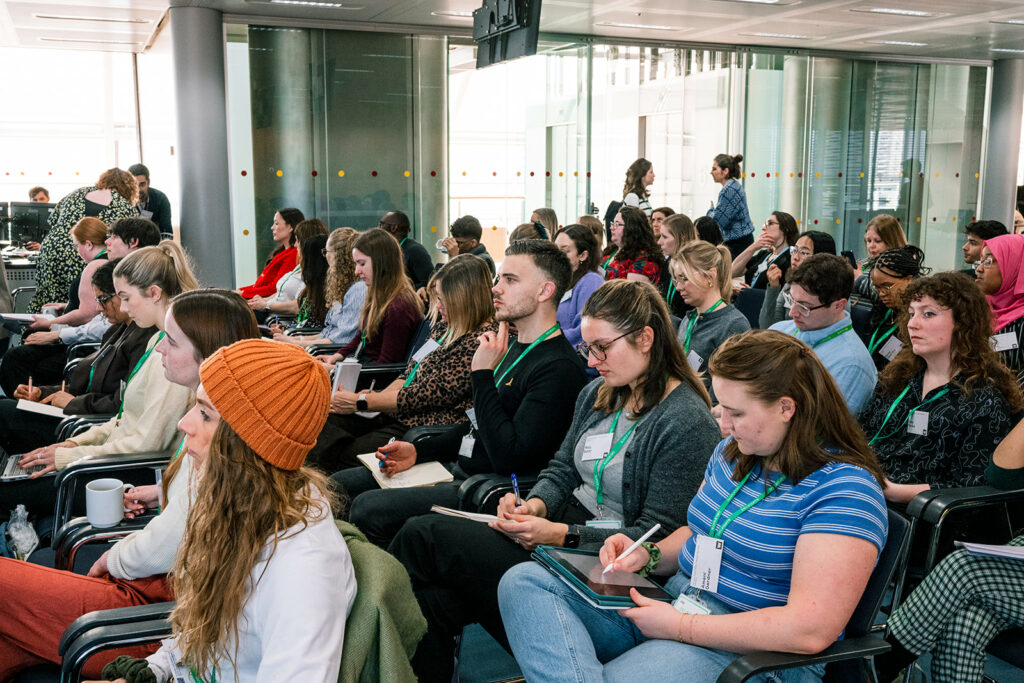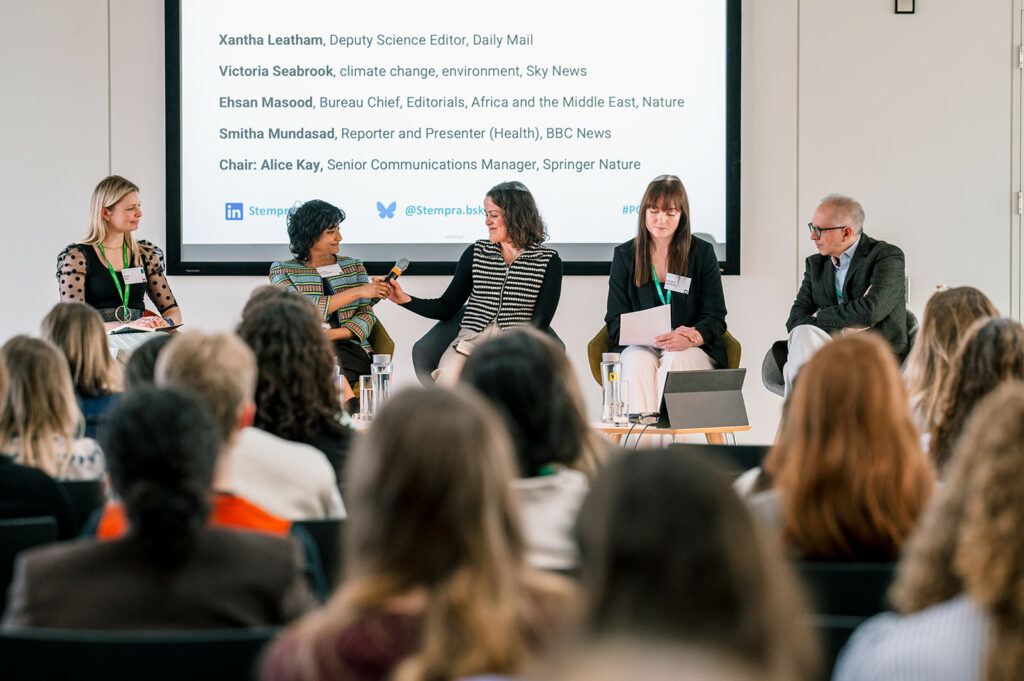Stempra members had the opportunity, on 6 March 2025, to attend the ever-popular Press Officer Training Day, an in-person event that we organise aimed at our early career members every year. One of our most in-demand sessions, and one we repeat as often as possible for all the insights it offers science communications professionals, is the Meet The Journalists session.
We kicked things off bright and early for it this year, and despite it being the first session of the day (at 9.30am!), the room was full – to the point of some delegates having to stand! Notebooks, notepads, notes apps – all of them were out, ears pricked up and pencils ready.


Xantha Leatham, Executive Science Editor at the Daily Mail, shared her notes on what works for journalists when it comes to research or science press releases, and equally important what doesn’t work.
She’s agreed to share them with our membership, so please enjoy – and get your pencils ready.


WHAT TO DO AND WHAT NOT TO DO WHEN IT COMES TO PRESS RELEASES
By Xantha Leatham
DO:
Embargoes:
- Make it clear if the story is embargoed at the top of the email, preferably in red and bold. The main thing we do when we receive emails is sort them into ‘days of the week’ folders and it really helps to have a clear embargo.
- Never do a midnight embargo – if it’s 00:00 on Tuesday then that could mean midnight going into Tuesday or midnight leaving Tuesday into Wednesday. Always do one minute past midnight so we know exactly which day it is.
- Our cut-off time for embargoes for the paper is traditionally 5am. So if you really want something to have the best chance of appearing in the paper then a 6/7/8am embargo isn’t ideal because it will most likely be online all day and the paper will see it as ‘old’ news. Late afternoon or early evening/midnight embargoes are best for the paper.
- There are two types of emails we usually receive – one is for embargoed stories that generally appear in journals, and the other is exclusive offerings. Please don’t send embargoed stories more than a week in advance because it can get confusing and sometimes it means the story can get missed (because by the time it comes around to the date, it’ll be far down in the ‘days of the week’ folder). Ideally send it a few days in advance.
- If it’s something embargoed for the same day, please send it relatively early on (between 6-8am). We start composing our news lists really early in the morning and the earlier we receive it, the better chance it’ll have of getting listed by our newsdesk.
- If you’re pitching an exclusive story, for us that usually means we’ll put it up for the weekend or Monday papers. It’s best to pitch these early in the week – ideally on Monday or Tuesday – so we have time to do any interviews, get any more info and write them up ahead of the weekend. Our newsdesk starts discussing weekend stories on a Wednesday and ideally they like them written up and ready to go by Thursday. If the story doesn’t appear one weekend then there’s still a good chance it can appear the following weekend – I’d always keep you updated and let you know if the desk are still interested.
Story ideas:
- Try and get to know the outlets you’re pitching to and direct your exclusive story ideas accordingly. There have been so many times I’ve received pitches about how ‘working from home is good for you’ or ‘the younger generation are more stressed than their parents’ – if you read the Mail, you’d know that these probably aren’t going to work for the paper. At the moment, the bar is really high for stories – the paper is getting smaller, and stories have to fight for space. When it comes to health or science research or stories, our desk usually go for ones that most readers would have heard of or be affected by.
- Please don’t be downhearted if someone gets back to you and says the story isn’t for them. It’s better than wasting your time and spending weeks trying to get a story into the paper when it’s most likely not going to get in.
What’s needed for a story:
- Have a clear summary at the top of the story, followed by more detail and a breakdown of the data. It’s so helpful to have a clear explanation of how the study was carried out, who did it, how many participants were involved and what the main findings were. It needs to be something a normal reader can understand.
- It’s great to have quotes from the researcher explaining why they carried out the study, what their findings were, whether they were surprised by their findings, and what the real-world implications could be. We don’t need pages and pages of quotes but a decent chunk is handy because we can always trim it down. It’s not hugely helpful to have simply one or two sentences as ideally for a story we need more than that.
- Try and think of what a good headline or intro could be and see if the researcher will play ball in terms of what they say. For example, a recent study about Mars revealed that layers of rock indicated there may have been large bodies of water on the planet, and that they were similar to coastal formations here on Earth. The researcher happily said it suggests there used to be ‘vacation-style’ beaches on Mars – and from that we were really able to work the story up. I think the headline was ‘Costa del Mars’ and we had a cartoon sketch of some aliens sunbathing. Please try and get across to researchers that they need to play ball if they want their story publicised. Unless a headline or detail in the story is inaccurate then they need to understand that we’ll have gone with the best angle that’s going to get into the paper.
- If possible, please include a link to high-quality pictures with press releases. A good picture can make or break a story. There might be pictures that appear within the study, or even a graphic that researchers sometimes include – please include links to download these. It really helps rather than us chasing after them on the day.
- Get your researchers to be available/regularly checking emails on the day in case we need a quick chat or just some clarifications/extra quote, which can also just be done via email. As much as we’d love to, it’s not always possible to interview researchers in the days before a story is embargoed. It can sometimes be hard to tell how much a newsdesk will like a story on any given day, so ideally we can’t risk wasting too much time per week interviewing people in case the story doesn’t even end up getting listed.
- Sometimes our newsdesk decide that we might want a graphic to go with a story. Again, this is where it’s helpful to have a researcher on-call or available to help out with this, so we can make sure we get it right.
- If possible, please include a link to the full study or attach it to the email. It saves us from having to email you back to chase it on the day.
Other bits
- If there’s something big happening in the news (huge rocket launch, or an asteroid coming nearby, or a fertility breakthrough) then emailing over a few expert comments (or putting them out through the Science Media Centre) is another great way to get your institution in the paper. These things are hugely helpful and we do tend to use them to provide balance to stories.
DON’T
Follow up emails more than once. Sometimes we can get pretty busy and it’s true that we might miss or dismiss an email by accident. So sending one follow-up, if you think it’s a really good story for the paper, is fine. But if you send us the same email over and over again, it’ll just be annoying. By this point we’ve definitely seen it and it’s not one for us. Journalists don’t always have the time to respond to all the pitches they get.
Get angry or upset if a story doesn’t run – we promise we’re trying our best but we can’t control what ends up in the paper. We’ll always try and give you a steer and will only take on stories that we think have a pretty decent chance of making, but we can’t predict the news schedule in advance.
Please try not to be dictated by things like ‘awareness weeks or months’ too much as, predictably, we get inundated during these times. During menopause awareness month I get a ridiculous number of menopause-related releases. I can understand why people do this but once we’ve had one or two in the paper the newsdesk will most likely not continue to list things on the same subject. Maybe save it for a quieter time.
Email with a story idea but then say ‘please get in touch for the full release if you’re interested’. We don’t have time – please just send the whole thing over so we can look at it properly and decide if it’s for us.


Editor’s note: These helpful tips were shared during the Meet The Journalists sessions. Our guests were Xantha Leatham (Executive Science Editor, Daily Mail), Victoria Seabrook (covering climate change and environment for Sky News), Ehsan Masood (Bureau Chief, Editorials, Africa and the Middle East, for Nature), Smitha Mundasad (Health reporter and presenter, BBC News), and Alice Kay (Senior Comms Manager, Spinger Nature) was our session chair.
